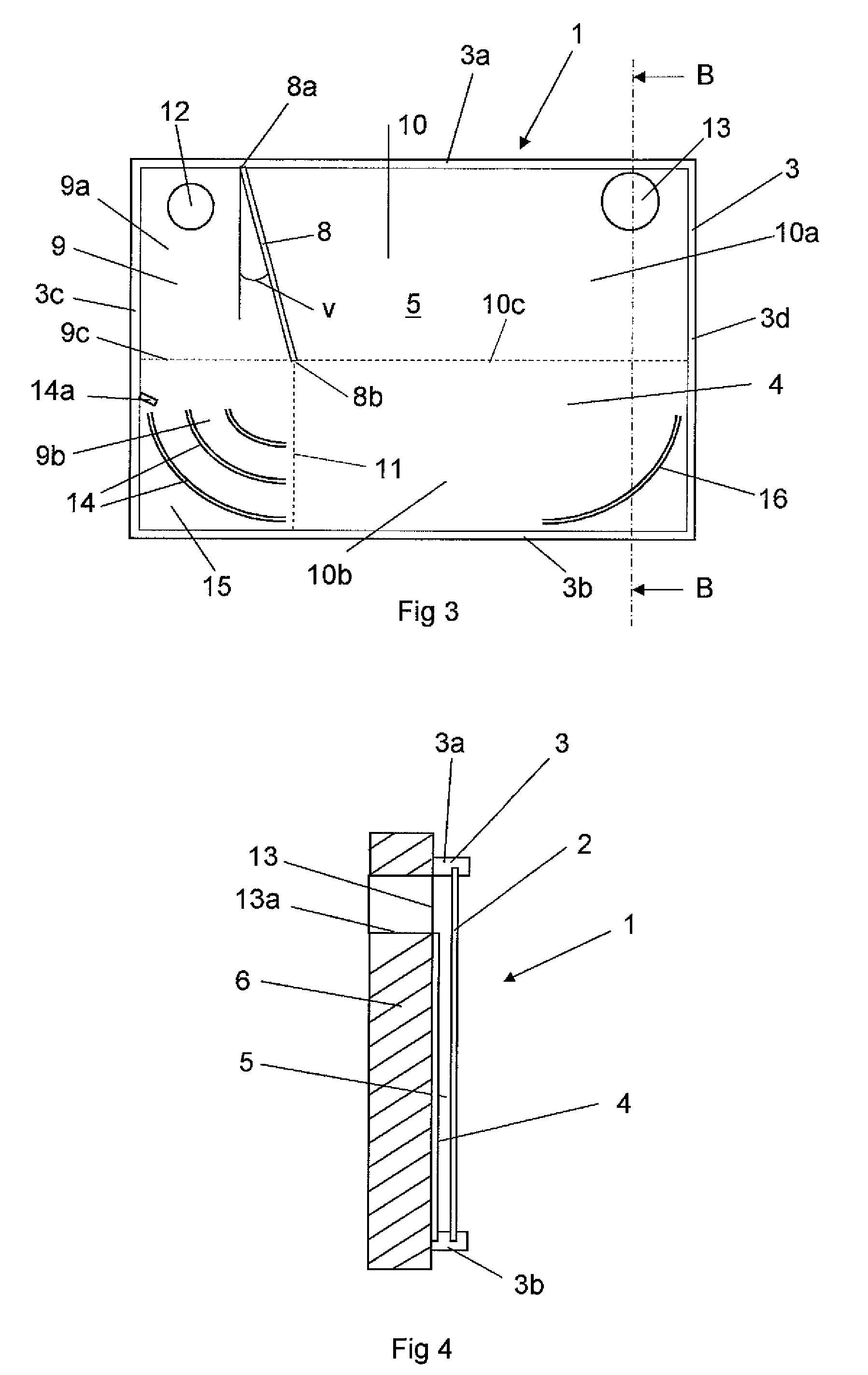Light absorber device
a technology of light absorption and light, which is applied in the direction of solar heat collectors with working fluids, solar heat collectors for particular environments, etc., can solve the problems of unbalance between the air in the two subspaces, drawback of air obtaining an increased flow resistance, etc., and achieves smoother change of direction, low flow loss, and reduced flow loss
- Summary
- Abstract
- Description
- Claims
- Application Information
AI Technical Summary
Benefits of technology
Problems solved by technology
Method used
Image
Examples
first embodiment
[0018]FIGS. 1 and 2 show a light absorbing device 1 according to the present invention. The light absorbing device 1 comprises an outer material layer of a transparent material which here is exemplified as a plane glass plate 2. However, the outer material layer may be constructed by other materials such as suitable plastic materials. The outer material layer does not need to have a plane outer surface but it may have another shape and be constituted by roofing tiles manufactured by a transparent material. The glass plate 2 is attached in a frame construction 3, which extends around the edges of the glass plates. The frame construction 3 has here a rectangular shape with an upper frame element 3a, a lower frame element 3b and two side frame elements 3c, 3d. Certainly, the frame construction 3 may have another shape.
[0019]The light absorbing device 1 comprises a radiation absorbing material layer which may be a plate 4 provided with a black surface. Certainly, other kinds of radiatio...
second embodiment
[0026]FIGS. 3 and 4 show a light absorbing device according to a This embodiment differs from the one shown above in that the space 5 for circulation of air here is located in front of the radiation absorbing plate 4. Consequently, the circulating air comes here in contact with the surface of the radiation absorbing plate 4, which is turned to the glass plate 2. The radiation absorbing plate 4 forms here a bottom surface in the space 5. In this embodiment, several guide elements 14 have been applied in den lower part 9b of the first space. The guide elements 14 have here a curved surface for changing the flow direction of the air successively and to guide it through the passage 11 to the second subspace 10. By means of several such curved guide elements 14, the air obtains a further reduced flow resistance. In this case, a lower portion of the second subspace 10 has also been provided with a guide element 16. This guide element 16 has the task to guide the air which flows towards t...
PUM
 Login to View More
Login to View More Abstract
Description
Claims
Application Information
 Login to View More
Login to View More - R&D
- Intellectual Property
- Life Sciences
- Materials
- Tech Scout
- Unparalleled Data Quality
- Higher Quality Content
- 60% Fewer Hallucinations
Browse by: Latest US Patents, China's latest patents, Technical Efficacy Thesaurus, Application Domain, Technology Topic, Popular Technical Reports.
© 2025 PatSnap. All rights reserved.Legal|Privacy policy|Modern Slavery Act Transparency Statement|Sitemap|About US| Contact US: help@patsnap.com



